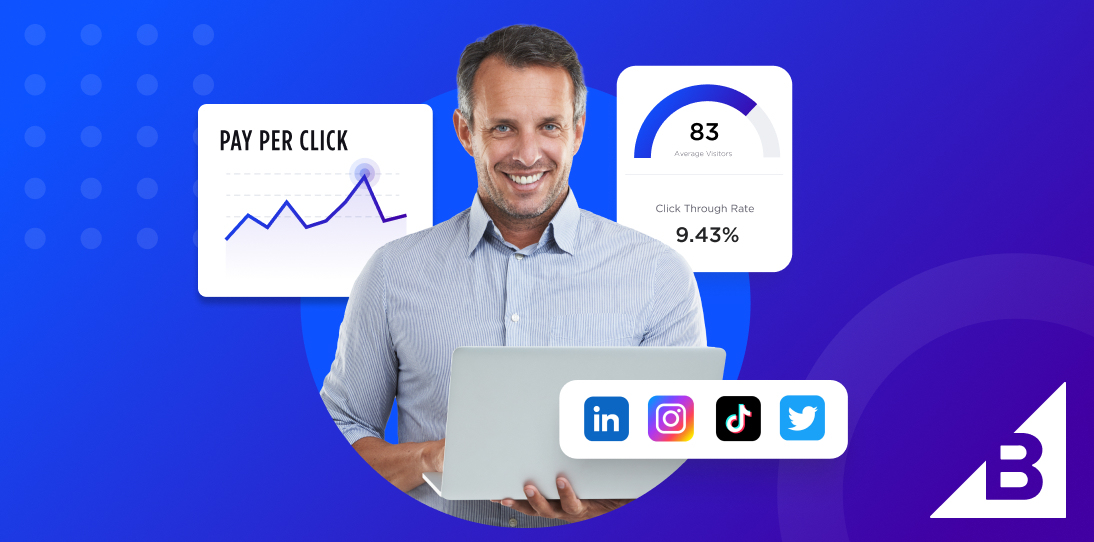- Enterprise
- Essentials
Digital Transformations are Changing How Businesses Operate and Interact with Customers

Increase Your Ecommerce Sales from $1 million to $100 Million
“Digital transformation” can be a nebulous term and can mean different things to different industries. It’s difficult to pinpoint a definition that applies to everyone.
Broadly speaking, digital transformation is the latest in a long line of technology-focused shifts. It’s changing how businesses relate to customers and how businesses conduct processes. It’s implementing new technology and upgrading every part of a business.
The biggest success stories are rethinking how they operate.
What is Digital Transformation and Why is it Happening?
The digital transformation process is a direct result of the exponentially accelerated evolution of technology. Technology enables projects that previously took weeks to be completed in hours. Everything is moving faster and the massive amounts of data now available opens up new possibilities and changes business goals.
So, why is this important to business, or more specifically ecommerce? Digital transformation empowers business to improve the customer experience, innovate quicker to keep up with the speed of business and gather customer insights that help better understand what motivates purchasing decisions.
Embracing and deploying successful digital transformation projects are increasingly required to remain competitive in the market.
Industries Changing by Digital Transformation
Virtually every industry has been impacted in some way, but these are experiencing greater — and quicker changes — than most.
The COVID-19 pandemic pushed more into the digital age, but more and more are at least setting up roadmaps for digital disruption. These are some digital transformation trends we’re seeing.
Consumer retail.
- Platforms recommend related products during checkout.
- Automated supply chain management that automatically updates sites when a product is out of stock.
- Self-checkout systems that reduce customer checkout times and improve user experience.
Enterprise software.
- Proliferation of automation has made SaaS commonplace and streamlined workflows.
- Improved person-to-person communication through better tools.
- The cloud has changed how enterprise IT organizations use third-party software.
Healthcare and pharmaceuticals.
- Greater access to health information by patients.
- Significant increase in internet of things devices, from robot-assisted surgeries to IOT wearables that monitor vitals real-time.
- Electronic health records to ensure medical history is kept accurate.
Telecommunications.
- Expanded service offerings, like cable television and Internet.
- Enabling 5G service for all mobile devices for increased connectivity.
- Investing in artificial intelligence solutions to optimize the customer experience.
Shipping and logistics.
- Quicker delivery times, including same day operating models.
- Smart warehouses that operate 24/7.
- Autonomous delivery vehicles that leverage cloud computing and reimagine logistics.
Digital Transformation Trends
While the digital transformation is influencing most industries, changes in social and customer behavior are influencing the digital movement as well. How people interact with businesses, products and each other are rapidly changing the customer journey.
In some cases, the digital world is the catalyst for change. For others, it’s the reverse. Here are some trends that are encouraging the digital transformation and the new era of big data.
Shoppers are starting purchase paths online.
The “where” part of the purchasing path has fundamentally shifted online. Shoppers who have a need to fill, but aren’t sure exactly what they need, are starting online and branching out from there. Window shopping has been replaced with web browsing, changing how customers interact with retailers.
They start their decision-making by researching items online, especially mobile users. An estimated 82 percent of mobile users research products online before purchasing.
What people are buying is changing as well. Big-ticket items like appliances or furniture are common purchases now. Clothes and luxury items are as well. Even groceries are moving online, with an estimated 20 percent of global grocery sales forecasted to be done online by 2025.
Omnichannel shopping is becoming the standard.
Customers are accustomed to purchasing from non-traditional outlets (like social media platforms) and are more open than ever to using different channels to research or purchase products. Not even brick-and-mortar locations are in the clear as customers are esearching products while in physical stores.
Customers aren’t necessarily shying away from physical stores, but they want a melded digital-and-physical experience. The option to purchase online and pickup in a store (or return items) is increasingly seen as the norm.
Embracing digital solutions to challenges keeps retailers competitive in markets full of choices.
Shoppers want the satisfaction of instant purchases.
While online shopping is growing, it comes with the caveat of delayed gratification — in most cases. Save for digital products (movies, music, video games), customers have to wait for physical deliveries before enjoying their new product. That’s starting to change, however.
Amazon’s introduction of Amazon Prime and the increase to same-day delivery and local distribution centers have changed expectations. Even two-day shipping is less competitive when some platforms are delivering in one. Customer expectations have changed. Embracing digital solutions that reduce the friction in the fulfillment process reduces delivery time.
Having a healthy online presence breeds credibility with customers.
An ecommerce site must be more than simply a platform where products may be purchased. They need to be full, well-rounded experiences that provide customers clear and credible information about products and brands.
Customer reviews, clear pricing and product comparisons remove boundaries in the purchase path and add value to the retailer. They create a feeling of partnership.
Going online is the social norm.
On average, Americans are spending five to six hours on their phone on a daily basis — and that’s increasing.
There aren’t many parts of our everyday lives that aren’t influenced in some way by technology. Accepting and embracing this is vital for ecommerce retailers. The digital transformation has made it easier than ever before to enter markets. That also means that there’s more competition. Brands to leverage technology to its fullest are more likely to win long-term.
The Final Word
The digital transformation has fundamentally altered how people interact with the world and people. It’s not slowing down, as future technologies like AI, machine learning and virtual reality become move from niche products to the mainstream.
Organizations that are agile and flexible stand to better pivot when the right opportunity presents itself and compete now and into the future.
FAQs About Digital Transformation
Why do companies delay digital transformations?
There’s not an easy answer to this as every case is unique. However, there are some general trends on why companies delay or take half steps in their digital transformation journey.
Digital transformations require significant overhauls of legacy systems.
For established, enterprise businesses, change can come at iceberg speed. New initiatives, especially those that involve wholesale changes to key parts of the business, need to be undertaken deliberately and with significant thought.
The execution can also be burdensome as legacy IT systems may or may not work well with new platforms. Deciding to embrace the business transformation requires absolute organizational buy-in and should not be taken lightly.
Executive sponsorship is mandatory.
Related to the above, these changes need a digital leader that can adequately allocate resources to complete digital transformation initiatives. This often comes from a CEO or CIO-level position. Enterprise-level decisions need someone to serve as the project’s champion, especially ones that introduce change management to the entire organization.
Initial investments are significant.
While long-term benefits often make the investment worthwhile, digital transformations require significant upfront costs. Building new ecosystems or grafting new and old systems together takes time and money. These kinds of extensive infrastructure improvements may take years to fully build out and negatively impact quarterly and annual reports. Sunny long-term forecasts are easier to sell, but need to take account of rough short-term waters.
May require niche technology.
Some industries, like those highly regulated or working in foreign markets, may have specific technologies or unique versions of technology that must be taken into account. This may bring added costs and complexities to digital transformation efforts.
The status quo is viewed as sufficient.
“If it ain’t broke, don’t fix it” is a valid mantra for successful companies. Companies running a successful brick-and-mortar shop may not see the value in becoming digital businesses. Most digital transformations are in response to something that “broke” and needs to be “fixed.”
If the metrics are good, why change? Until this happens, it can be difficult to get buy-in on costly projects that may or may not have a good return on investment.
Startups without much history are more likely to embrace this change.
What makes up a digital transformation?
Most digital transformations include these five essential elements. These steps are typically found when businesses shift how they operate and take on new business models.
Digital technology integration.
Digital transformations aren’t just about technology, but it’s a major component. Organizations need to ensure that they’re adding the right systems and not adding systems just for the sake of having new toys. Additional platforms need to be added with specific outcomes in mind.
Improve customer experiences.
Digital transformation success, at its core, is about improving revenue. This starts with improving sales, which starts with the customer experience. Advancements should be customer-focused and focus on what they value.
Modernize company culture.
Digital transformations streamline business processes and can enhance company culture. By embracing an environment of digital innovation, employees are encouraged to find new solutions - powered by technology - to old problems. Experimenting is encouraged and measured risks should be considered.
Focus on core business needs.
Energy and resources should not be wasted on fringe elements of the business. By focusing technology where it means the most - the core business - companies are setting up digital transformations to have the greatest impact.
Build business strategies based on the wider landscape.
Have a full understanding of what other industries and competitors are doing and learn from their successes and failures. Understand what customers liked and didn’t like and build a digital transformation strategy from there.



